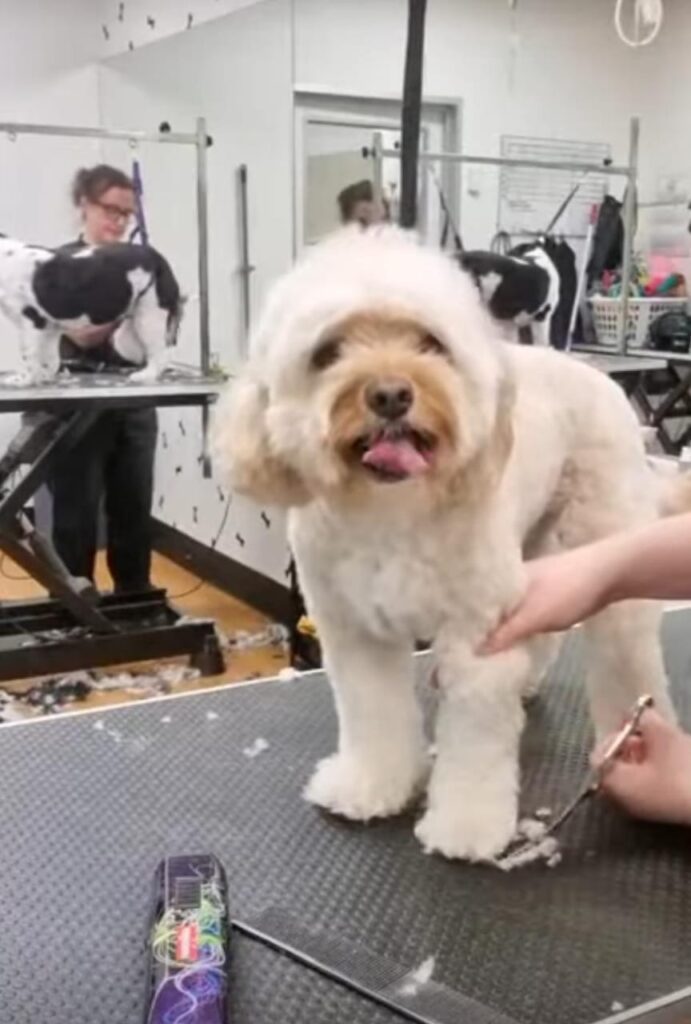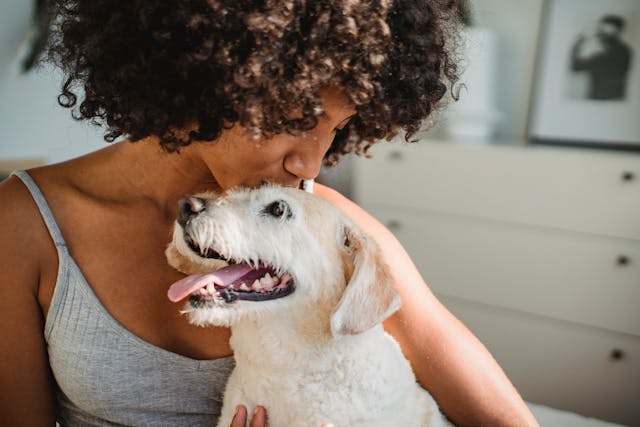I’ve been asked multiple times do labradoodle shed ?Labradoodles are one of the most popular crossbreeds, combining the intelligence and loyalty of the Labrador Retriever with the hypoallergenic traits of the Poodle. However, when it comes to shedding, there are many misconceptions and questions surrounding this breed. As a potential pet owner, it’s essential to understand Labradoodle coat types, grooming needs, and shedding management techniques to keep your furry friend comfortable and your home clean. This guide will explore everything you need to know about Labradoodle shedding, including allergies, skin issues, and shedding patterns.
Do Labradoodles Shed a Lot?
One of the most common questions people have when considering a Labradoodle is: Do Labradoodles shed a lot? The answer depends largely on the coat type and the generation of the Labradoodle. F1 Labradoodles, which are first-generation crosses between a Poodle and a Labrador, can have a variety of coat types, including curly, wavy, or straight coats. F1B Labradoodles, which are a cross between an F1 Labradoodle and a Poodle, generally have a curly coat that sheds very little. In general, Labradoodles are considered low-shedding or minimal shedding dogs, but they still shed to some degree. If your Labradoodle has a straight coat, they may shed more frequently, while curly coats tend to shed less.
Table of Contents

How Do I Stop My Labradoodle from Shedding?
While it’s impossible to completely eliminate shedding, there are several things you can do to reduce shedding and manage fur control in your Labradoodle. Here are some effective tips to help keep shedding under control:
- Regular Grooming: Brushing your Labradoodle at least once a week is essential to remove loose hairs and prevent mats or tangles. A slicker brush or wide-toothed comb is ideal for curly coats. Frequent bathing using a hypoallergenic shampoo can also help maintain your dog’s skin health and coat shine.
- Healthy Diet: Ensure your Labradoodle’s diet is rich in omega-3 and omega-6 fatty acids, vitamins A and E, and protein to support a healthy coat and reduce shedding.
- Supplements: Fish oil and biotin supplements can help improve coat health and manage shedding. These can be added to their food or given as chewables, but always consult your vet for the proper dosage.
- Regular Check-ups: If you notice unusual or excessive shedding, consult your vet to rule out any underlying health issues such as dermatitis, allergies, or parasites that might be contributing to the shedding problem.
What Type of Labradoodle Doesn’t Shed?
If you are looking for a Labradoodle with the least amount of shedding, consider getting an F1B Labradoodle or a multigenerational Labradoodle. F1B Labradoodles are bred from an F1 Labradoodle and a Poodle, so they typically inherit more of the Poodle-like traits, which include a curly, hypoallergenic coat. This type of Labradoodle is the most likely to have non-shedding or minimal shedding tendencies.
Another option is multigenerational Labradoodles, which are bred from two Labradoodles, often with consistent Poodle-like traits. These dogs generally have wool coats or fleece coats, which are more resistant to shedding. However, it’s important to note that even these dogs will shed some fur, but the amount of shedding is significantly less than that of Labradoodles with straight coats.
Labradoodle Coat Types and Their Impact on Shedding
Labradoodles come in different coat types, which significantly influence their shedding levels. Some Labradoodles have a curly coat, while others have straight or wavy coats. The curly coat tends to shed the least, making it an excellent choice for families with allergies or those who prefer minimal shedding. In contrast, the straight coat is more prone to shedding, with high shedding chances in certain cases. The wavy coat, which is the most common, falls somewhere in between with moderate shedding. Understanding the different coat types helps determine the level of shedding risk and how to manage it effectively.
The Genetics Behind Labradoodle Shedding
The shedding pattern of a Labradoodle is often determined by genetics. F1 Labradoodles, which are first-generation crosses between a Poodle and a Labrador, tend to have a wider variety of coat types, including Poodle-like textures. F1B Labradoodles, which are a cross between an F1 Labradoodle and a Poodle, generally inherit more Poodle-like traits, including a curly coat that sheds minimally. The genetic lottery plays a crucial role in determining how much your Labradoodle will shed, and coat inheritance can vary even within the same litter.

Myths and Realities of Labradoodle Shedding
There is a widespread myth that Labradoodles are non-shedding dogs. While hypoallergenic and low-shedding, Labradoodles are not entirely non-shedding. Hypoallergenic dogs are often touted as not shedding, but the truth is that all dogs shed to some degree. What makes Labradoodles better for people with allergies is their wooly coat, which traps the shed fur inside, preventing it from spreading all over your home. However, there are still shed fur and loose hairs to manage.
Seasonal Shedding and the Importance of Grooming
Labradoodles go through seasonal shedding, particularly during temperature changes. As they transition from their winter coat to their summer coat, the shedding increase can be significant. To manage this, regular grooming is necessary. Frequent brushing can help prevent matting and tangling while also removing dead hair. A good slicker brush is essential for removing loose hair and reducing shedding.
During the shedding season, bathing your Labradoodle with hypoallergenic shampoo can also help maintain their skin health and control hair loss. However, be cautious not to overbather your dog, as this can strip their skin of natural oils, leading to dryness and skin issues.
Grooming Methods and Frequency
To maintain a healthy coat and reduce shedding, regular grooming is essential. Depending on your Labradoodle’s coat type, you should aim to brush their fur at least once a week, using a wide-toothed comb for tangles and a slicker brush to remove loose hairs. If you have a Labradoodle with a curly coat, you may need to groom them every 8 to 12 weeks to prevent mats and knots. For those with straight coats, you may need to trim or style their hair more often, with haircuts like the puppy cut or teddy bear cut being popular choices.

Diet and Nutrition: Key to Shedding Management
A well-balanced diet plays a crucial role in shedding management. Ensuring your Labradoodle’s food contains the right nutrients will help maintain their skin health and reduce shedding. Fatty acids, particularly omega-3 and omega-6, are vital for a healthy coat. Fish oil supplements or food containing biotin, zinc, and selenium can help reduce shedding and support skin pH balance. A balanced diet that includes proteins, vitamins A, E, and minerals will also help your Labradoodle maintain their coat shine and prevent excess shedding.
Health Issues Linked to Shedding
Excessive shedding can sometimes be a sign of health issues. If your Labradoodle experiences hair loss or skin irritation, it may be linked to dermatitis, allergies, or other medical conditions. Infections and parasites like fleas can also contribute to excess shedding. It is essential to monitor your dog’s skin condition and consult with your vet if you notice any irregularities in their shedding patterns. Regular check-ups with the vet can help identify potential health problems and ensure your Labradoodle remains healthy and comfortable.
Managing Allergies and Shedding
One of the main reasons potential dog owners seek out Labradoodles is due to their hypoallergenic properties. While they shed less than many other breeds, some people may still experience allergic reactions to the dander or saliva of the dog. Shedding itself can also contribute to allergic reactions in sensitive individuals. To minimize the risk of allergic reactions, ensure your Labradoodle is well-groomed, and consider using lint rollers to remove stray hairs from furniture. Regular vacuuming and home cleaning are also essential for controlling stray hairs and furballs in your living space.

Professional Grooming vs. At-Home Grooming
Whether you choose to groom your Labradoodle at home or take them to a professional groomer, the key to effective shedding management lies in regular care. Professional grooming is an excellent option if you want to ensure your dog receives a high-quality cut and thorough grooming, especially for curly coats that require meticulous attention. However, at-home grooming can be more budget-friendly and convenient for many pet owners. Regardless of the choice, grooming frequency and using the right tools for hair maintenance are essential to keep your Labradoodle comfortable and reduce shedding.
Conclusion: Embrace the Shedding Saga
While Labradoodles may not be entirely non-shedding, their wooly coat and minimal shedding make them one of the best choices for families with allergies. By understanding the genetic influences, coat variations, and proper grooming methods, you can manage your Labradoodle’s shedding and maintain a clean and healthy home. Regular brushing, proper nutrition, and health care will not only reduce shedding but also enhance your dog’s skin health and overall well-being. So, embrace the shedding saga and enjoy your time with your adorable, affectionate, and lovable companion.
Australian Labradoodle Behavior Problems: Causes, Solutions, and Training Tips2025
Mini Australian Labradoodle Info, 7Pros and Cons explained
Labradoodle Husky Mix:Cute Hybrid Breed 10 Unknown Facts
The Black and White Labradoodle 10 Lil Known Facts (You’ll Amazed) To Know

